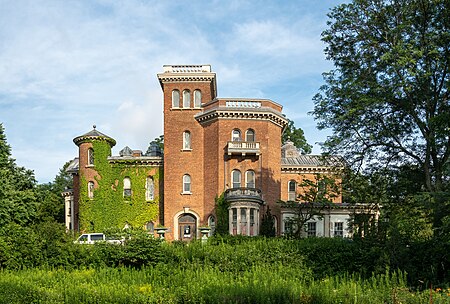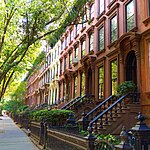Litchfield Villa
Alexander Jackson Davis buildingsHouses in BrooklynHouses on the National Register of Historic Places in New York CityItalianate architecture in New York CityNational Register of Historic Places in Brooklyn ... and 2 more
New York City Designated Landmarks in BrooklynProspect Park (Brooklyn)

Litchfield Villa, or "Grace Hill", is an Italianate mansion built in 1854–1857 on a large private estate now located in Prospect Park, Brooklyn, New York City. It is located on Prospect Park West at 5th Street. The villa was designed by Alexander Jackson Davis, America's leading architect of the fashionable Italianate style, for railroad and real estate developer Edwin Clark Litchfield.
Excerpt from the Wikipedia article Litchfield Villa (License: CC BY-SA 3.0, Authors, Images).Litchfield Villa
Prospect Park West, New York Brooklyn
Geographical coordinates (GPS) Address External links Nearby Places Show on map
Geographical coordinates (GPS)
| Latitude | Longitude |
|---|---|
| N 40.666944444444 ° | E -73.973888888889 ° |
Address
Litchfield Villa (Litchfield Mansion)
Prospect Park West 95
11215 New York, Brooklyn
New York, United States
Open on Google Maps










